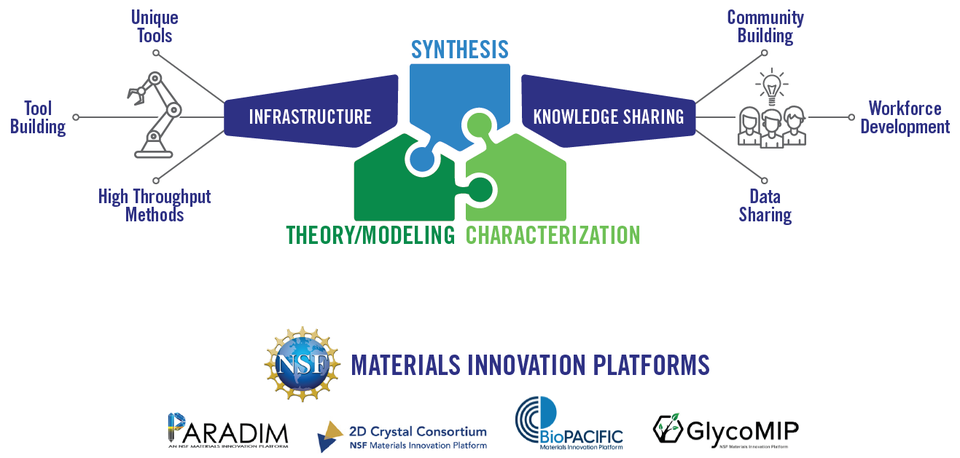Materials Innovation Platform: MGI enhanced by infrastructure and knowledge sharing

(Top) Key MIP ingredients. (Bottom) PARADIM and 2DCC MIP on electronic and quantum materials were launched in the inaugural class, in 2016. BioPACIFIC MIP and GlycoMIP on biomaterials and polymers were established in 2020. See https://www.nsf.gov/funding/pgm_summ.jsp?pims_id=505133.
Created September 2, 2021

